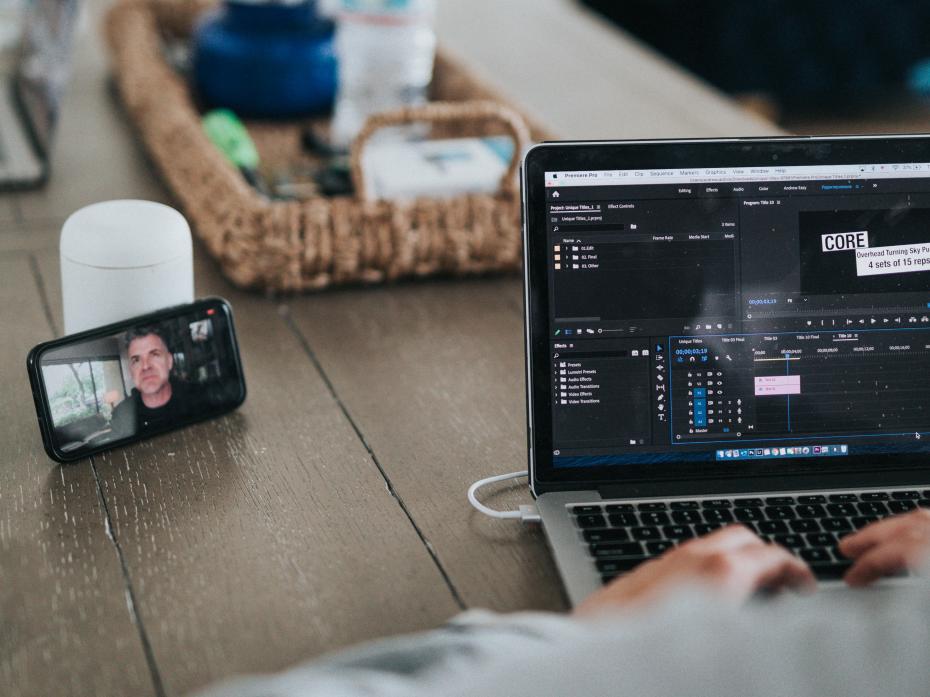
More screen time: using instructor-featured video to create connection online

One of the key changes faced by students and educators alike in the shift to online teaching has been a decrease in social presence. Yet numerous studies have demonstrated the importance of social presence in education. The benefits include increased student satisfaction, participation and engagement with material, and a greater likelihood of students feeling comfortable in a course and confident in approaching their instructor. More social presence has been shown to reduce challenges inherent in online education such as interpersonal disconnection and isolation.
A simple way to boost social presence
One of the most effective strategies to foster social presence in online teaching is the use of instructor-featured videos. This practice is not only among the most successful ways of building social presence but it’s also one of the simplest. Advances in technology mean such videos are now relatively easy to film and can involve as much or as little preparation or editing as one would like.
For example, I have sometimes recorded videos using a high-definition webcam and external microphone, but other times I simply use my smartphone camera. I’ve recorded videos in my office, my home and even my car, and then, having uploaded them to websites such as Vimeo and YouTube, shared links to these videos with my class.
My own use of instructor-featured videos has involved recording myself talking about course readings or current events, sharing relevant stories from my professional work, and reading my children’s storybooks as a means of explaining or supplementing course content.
When and how to use instructor-featured videos
Alleviate anxiety
I have also used these videos to check in with students, support them during challenging times, and congratulate them on completing significant milestones in their educational journey. Regardless of each video’s specific purpose, student feedback suggests that instructor-featured videos have numerous major benefits. They help students feel grounded, connected and reassured.
In a world hit by Covid-19, alongside myriad other struggles students commonly encounter, it follows that many if not most would feel, at times, overwhelmed, disoriented, stressed or highly anxious. It is little wonder that many struggle to feel grounded – which involves feeling centred, balanced or otherwise whole. Comments from students suggest the simple act of sharing instructor-featured videos is an effective way of helping them feel more grounded amid such difficulties.
Create connection
Students in online education often complain that they rarely feel a sense of interpersonal connection. This lack of connection is not limited to relationships with their peers; it also affects the links with their instructors.
One student commented: “Sometimes online courses [make it] hard to create personal connections and for students to feel support. In the videos that the professor posted, I felt that he was able to connect with us on a personal level.”
The isolation experienced in online education can make students feel as though they are completely alone. Instructor-featured videos are an effective way to help to cultivate feelings of connection, a connection that students, like most people, crave.
Humanise yourself
When a course is taught using a text-based approach to disseminate information, it can be easy to forget that at the other end of any such communication is a fellow human being.
One student wrote: “This may sound silly but being able to actually see the professor is reassuring in a way. Digital classrooms can feel so disconnected, so I appreciated a chance to see the person on the other end.”
Instructor-featured videos can clearly communicate the reality that the instructor is not a distant, cold academic but rather a person. In turn, this realisation can reassure the student that they are not the only “actual person” in a digital world.
Encouragement and support
Finally, instructor-featured videos can help students feel encouraged and supported. They can even help students re-engage with course material. Given their many benefits, instructor-featured videos are recommended as one of the easiest and most effective ways of fostering social presence in online education.
Top tips for creating instructor-featured videos
- Consider and plan ahead what you will share in the video so you stay on topic.
- Record the video in a setting with minimal background noise to ensure clear audio.
- Post videos regularly throughout a course: for example, at the beginning of the course, biweekly throughout a term, and at the end of the course.
- Post videos for a variety of purposes. For example, welcome students at the start of a course; address student questions or concerns; explain course requirements; introduce supplementary material; check in with students; acknowledge significant events when they arise; and congratulate students on completing exams.
- Be creative. Don’t be afraid to use props, record videos in different locations or tell stories to illustrate concepts.
- Review every video before sharing it with the class. This will ensure the content is appropriate and the audio and video quality are sufficient. If you are unsure about whether to share a video, ask a trusted colleague to review it ahead of time.
- Watch for or ask students for feedback about the videos. Any mention of the videos – be it positive or negative – provides an opportunity to improve your approach.
- Be genuine. Remember that students care less about whether a video has pizzazz than they do about knowing their instructor is a real person who truly cares about them and their learning.
Aaron Smith is a PhD candidate at Wilfrid Laurier University and an instructor in the School of Social Work at Renison University College at the University of Waterloo.
This resource is based on Aaron Smith’s research paper “Instructor-featured videos and the importance of social presence in online education”.


